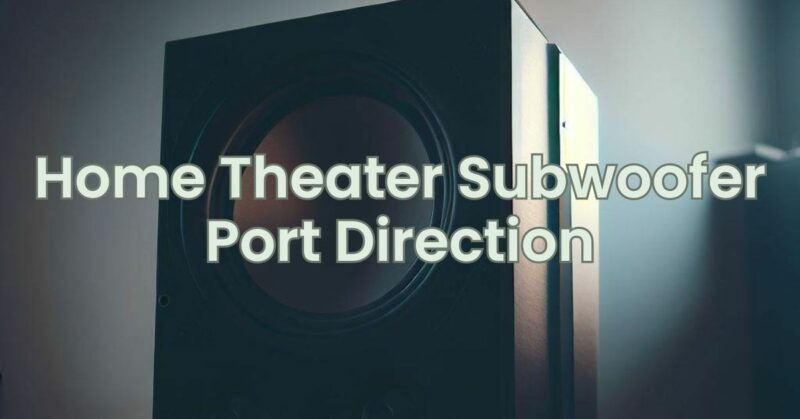A home theater system is incomplete without a powerful subwoofer that delivers deep, rumbling bass, immersing you in the cinematic experience. When setting up your home theater subwoofer, one critical decision to make is the direction of the subwoofer port. The port plays a crucial role in optimizing bass response and overall performance. In this article, we will explore the considerations and options for subwoofer port direction in a home theater setup, allowing you to unleash the full potential of your audio system.
Understanding Subwoofer Ports:
Subwoofer ports, also known as bass reflex ports or vented ports, are openings in the subwoofer enclosure that enhance low-frequency response by utilizing the air movement within the cabinet. The port allows the rear soundwaves generated by the subwoofer driver to escape and blend with the front soundwaves, resulting in improved efficiency and bass output.
Options for Subwoofer Port Direction:
- Front-Facing Port:
A front-facing port is positioned on the front panel of the subwoofer enclosure, in line with the subwoofer driver. This configuration offers several advantages in a home theater setup. Firstly, a front-facing port can enhance the impact and presence of low-frequency effects by allowing the bass energy to directly interact with the listener. Additionally, front-facing ports can facilitate better integration with the main speakers, creating a more cohesive and seamless soundstage.
- Down-Firing Port:
A down-firing port is positioned on the bottom panel of the subwoofer enclosure, facing the floor. This configuration allows for increased flexibility in subwoofer placement. With a down-firing port, the subwoofer can be positioned anywhere in the room, as the bass energy radiates omnidirectionally, interacting with the room’s acoustics for a more immersive experience. Additionally, a down-firing port can help minimize the potential for audible port noise, as any turbulence is directed towards the floor.
Considerations for Subwoofer Port Direction:
- Room Acoustics:
The acoustic characteristics of your home theater room play a significant role in determining the ideal subwoofer port direction. If your room has strong bass reinforcement or resonant frequencies, a down-firing port might be advantageous in distributing the bass energy more evenly throughout the space. Alternatively, in rooms where bass absorption is prevalent, a front-facing port can compensate for any loss of bass impact and provide a more engaging listening experience.
- Subwoofer Placement:
The placement of your subwoofer within the room can influence the choice of port direction. If your subwoofer is located near a wall or corner, a front-facing port can take advantage of boundary reinforcement, resulting in a stronger and more impactful bass response. On the other hand, if your subwoofer is positioned away from walls or has more flexibility in placement, a down-firing port can offer greater versatility and facilitate an immersive bass experience throughout the room.
- Personal Preference:
Personal preference also plays a vital role in determining the ideal subwoofer port direction. Different individuals have varying preferences when it comes to bass sound. Some may prefer a more direct and punchy bass response, while others may prioritize a more diffuse and enveloping bass experience. Experimentation with different port directions and careful listening can help you identify the port direction that best aligns with your preferences.
When configuring your home theater subwoofer, choosing the optimal port direction is crucial for achieving a rich and immersive bass experience. Front-facing ports offer direct interaction with the listener and seamless integration with the main speakers, while down-firing ports provide versatility in placement and a more evenly distributed bass energy. Considerations such as room acoustics, subwoofer placement, and personal preference should guide your decision. By selecting the right port direction, you can unlock the full potential of your home theater system, immersing yourself in the captivating world of high-quality cinematic sound.


